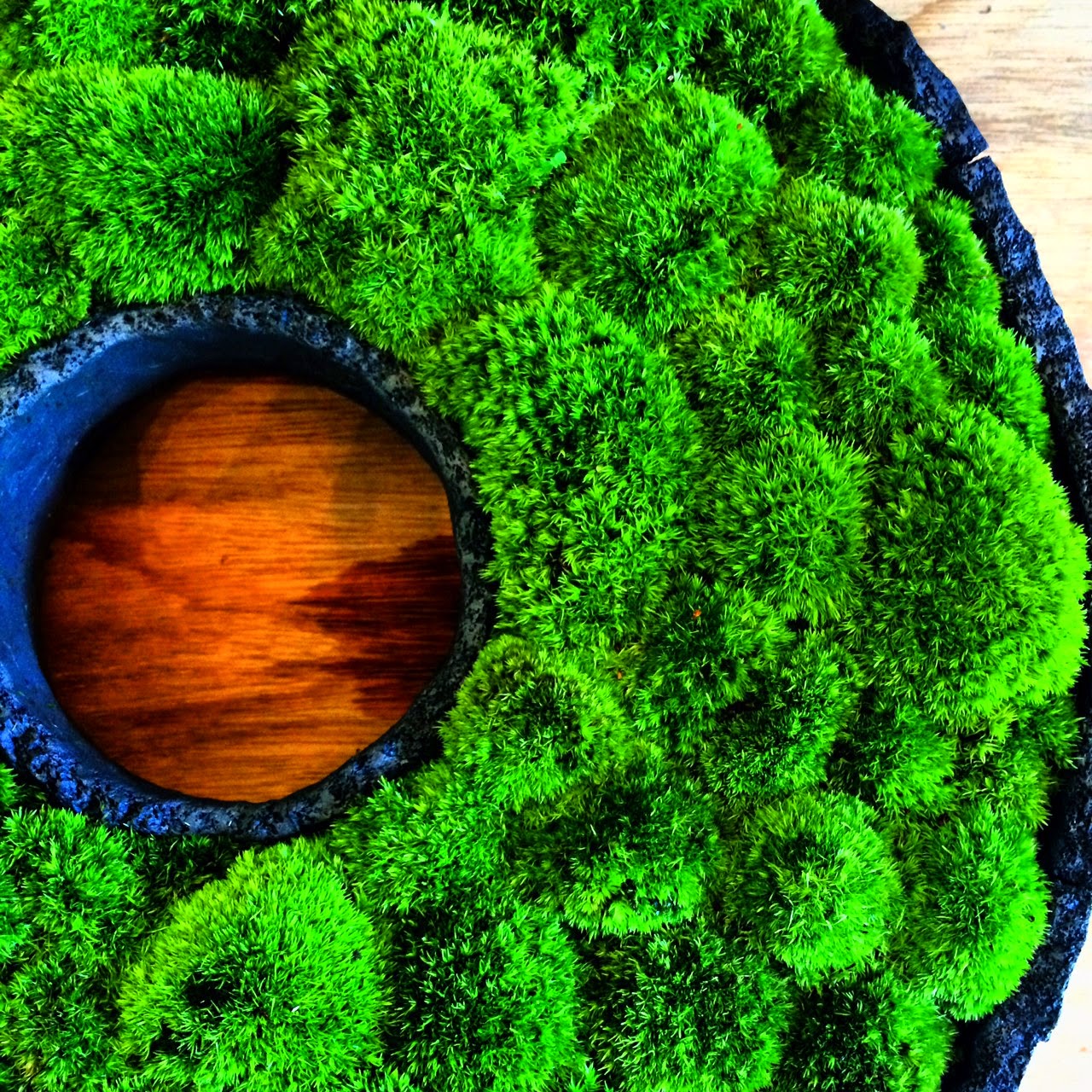盆栽作家で庭師、moss green ikkei代表の三浦さん
Today I would like to introduce Bonsai Artist and founder of Moss Green Ikkei, Mr. Miura.
大学を卒業後、単身でオーストラリアへ渡り、植物と深く関わりのあるワイナリーで働く。
帰国後、オーストラリアで培った経験を生かし、植物との関わりがあり、日本独自の文化を持つ、庭師として造園を手がける傍ら、現代様式に調和する盆栽の探求を始める。
After graduating from University, he moved to Australia and worked at the winery. With this as a start he started to learn about plants. Through his experience in Australia he realized he wants to continue to work with plants and also be able to promote beauty of Japanese culture and found lifetime carrier as Niwashi and Bonsai Artist.
盆栽とは、森や林、山などの自然な風景を小さな器の上につくるアート。その醍醐味は、小さな器から大自然を空想の中で想像させることができるところ。
Bonsai is an art to create miniature version of grove, forest, or mountain on a vessel. Uniqueness of Bonsai is that you will be able to create the picture of nature with your imagination.
日本の盆栽の歴史は平安時代に遡る。その様子は万葉集にも詠われている。元々は、珍しい草花を木の枠に入れていたことから、「お盆」に「植える(栽)」というところに語源があり、現代の様に陶器に入れる様になったのは、江戸時代末期ごろからである。これには徳川家康の影響が大きいと言われており、当時野草にこだわっていた家康が、江戸に引っ越す際に鉢に入れて植物を移したことから、徐々にその形が根付いていったと言われる。それと同時期に、針金などを使って形を作る、中国の盆栽スタイルが取り入れられるようになった。
The origin of Bonsai goes far back to the Heian Period and it was described in one of the famous 8th century poetry Manyoshuu. Origin of Bonsai comes from planting on the tray and that was how people capture unique flowers and plants back in time. It started to change its style from end of Edo period influenced by Tokugawa Ieyasu. He used to collect variety of medicinal plants and when he moved the capital to Edo he planted these plants into a ceramic plates. Around same time Bonsai integrated with Chinese style of Bonsai, which uses wires to create the shape.
盆栽は元々、町民文化であり、植物を身近に楽しむためのものであった。
しかし昨今では値段が高くて敷居の高い趣味といったイメージがあるため、ikkeiさんは「大人から子どもまで手頃に植物を楽しめる、身近な存在になってほしい」と願っている。
盆栽と日本食との意外な共通点とは。味も大事だが、見た目も大事な和食。盆栽もどんな器を使って、どこの苔を使い、どう表現するのか。設えるという観点から見ると盆栽と日本食は通ずるところが同じである。
In recent year when people hear Bonsai they tend to imagine it is hard to maintain and expensive to buy, however Bonsai originally was a popular culture among townspeople. It was one of the ways to enjoy and find nature in the city. Mr. Miura wants Bonsai to be part of everyday life so that people can feel and enjoy nature near you. Bonsai has some similarity with Japanese cuisine. It is one of the key concepts in Japanese cuisine to have good taste but also to have creative or appealing decoration when they offer to the guests. Bonsai also have many choices what type of ceramic to use, which moss to plant, and how to present the moss and plants in one small area.
海外でも近年話題になっているBonsai文化。身近で楽しんでもらうためには、現地で調達出来る植物を使って、いかに日本風なBonsaiに魅せることができるかが鍵となる。そんな考え方を元に、将来は苔のプロフェッショナルとして「枯れ葉から造る盆栽」というユニークなスタイルにも挑戦予定。
Bonsai Art become popular culture among different countries in recent years. Mr. Miura said it is hard to bring over plants from Japan therefore, it is important as a Bonsai Artists to be able to create Bonsai with the local plants and keep the traditional look of Japanese Bonsai. That is the time he can proof he is a professional Bonsai Artist. One of his unique projects that he wants to challenge one day is to create Bonsai from dead leaves.
This Bonsai is call Ryukyu Bonsai and this is a Bonsai from Okinawa. Okinawa was one of the places that spread the Bonsai culture to the world.
「庭師は水やり3年。そうすれば植物の気持ちが分るようになる。」とおっしゃっていたikkeiさんの考える庭師とは、ガーデナーとは違い、見た目を重視してデザインする庭造りではなく、植物の気持ちを伝え、植物の立場から庭を造り出す職人のこと。ikkeiさんの開催するワークショップでは、こだまが寄ってくるような盆栽を造り、木の魂を大切にすることを学ぶ。これは植物を尊重し、生活の中に調和させることの出来るikkeiさんだからこそ、教えることのできる概念である。
You will know how plants feel after watering the plants for 3 years and this is one of the most important processes for Niwashi. Niwashi is slightly different from gardener. Gardener is a designer of the garden where Niwashi is a communicator of the garden and listens to plants condition and build garden from plant’s point of view. Mr. Miura teaches in his workshop to create Bonsai that calls tree spirit, Kodama and learn importance of the spirits that exist in plants.
He shows respect to plants and this is the reason he can harmonize the balance of plants into daily life.
庭造りでは、苔の代わりに芝を使うこともあるが、芝は全体的に青々としているので、侘び寂びの要素が少ない。しかし、苔は朽ち果てる部分もあれば、生き生きとしている部分もあり、日本庭園ならではの、侘び寂びの奥ゆかしさを抜群に表現出来るのである。
When you create a Japanese style garden, sometime people chose to use lawn instead of moss, however lawn is very green and it lacks of Wabi Sabi element, which is important beauty concept in Japanese culture. Moss has some green parts, brown parts and some are wither and this creates perfect Wabi Sabi elements in garden.
Ikkeiさんの考える侘び寂びとは
What is Wabisabi to Mr. Miura?
侘び寂びは第六感を超えた第七感。日本人が大切にする感覚で、例えば
「桜の芽がでて、花が咲き、散って、枯れた木を美しいと思う心」や
「栄枯盛衰」の概念の中の「命を吹き込み、なくなって行くまでの過程」であったり、
「枯れ葉や落ち葉、ただのゴミとなるものに、隠れたストーリーを見いだせる心」が侘び寂びの真髄だと語ってくれた。
Wabisabi is like a seven sense. This is the sense that Japanese people find value to define beauty.
“Story of Prosperity and decline from birth to death”
“Find a behind story when you see a dead leaf or something usually define valueless”
Mr. Miura believes that these are the core essence of Waibisabi.
Mr. Miura believes that these are the core essence of Waibisabi.




